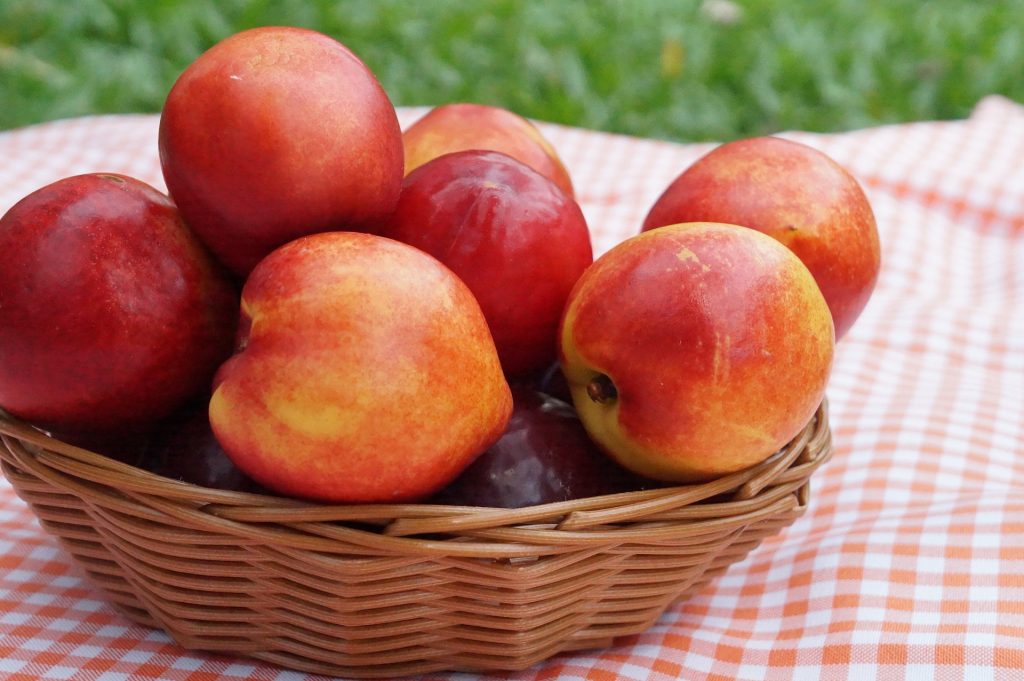Blog
Find articles that matter. From trading to shipping, trends to valuable goods, you can deep dive into everything you need.
Latest Posts
Blog
It is always healthier to consume vegetables that grow in season. This is because the vegetables grown in the season ripen naturally. In this way, the vitamins and minerals in the vegetable preserve its nutritional value. In addition, all vegetables and fruits grown in season are much tastier.
When it comes to the winter seasons, following a healthy diet that will strengthen the immune system is necessary. At this point, natural and delicious winter vegetables with high nutritional value are preferred. In winter, tasty vegetables add flavor to the tables at every meal of the day. Healthful and delicious vegetables such as cabbage, onions, spinach, leeks, carrots, parsley, radishes, garlic, and celery are among winter vegetables.
Turkey is a country with fertile centuries-old lands where all seasons are happening. For this reason, almost every winter vegetable is produced in these fertile lands. Turkey is a country both self-sufficient and exports some of the winter vegetables. This article will examine the winter vegetables exported from Turkey to different countries. Let's explore the winter vegetables produced and exported in Turkey together.
Onion
Onion is a winter vegetable with numerous health benefits. Such that this vegetable is known as a natural remedy against diseases. Onion has miraculous benefits such as reducing the risk of various types of cancer, protecting skin and hair health, and strengthening the immune system. Although chopping onions makes you cry so much, this vegetable is the main character of many dishes. Also, it can be consumed both raw and cooked.
According to 2021 data, approximately 105 million tons of onions were produced in 5.5 million hectares of land in 138 countries. Furthermore, according to the data from the Food and Agriculture Organization, Turkey is among the leading countries in onion production globally and ranks 5th. In 2021, 2.5 million tons of onion production was realized in Turkey. Also, Turkey exported 221 thousand tons of onions in 2021. In the ongoing 2021-2022 agricultural season, the countries that import the most onions from Turkey are Bangladesh, United Arab Emirates, Russia, Iraq, and Georgia, respectively.
Onions are produced in almost every region of Turkey. The areas where production is concentrated are Central Anatolia and the Central Black Sea. Besides, the provinces where production is most intense are Ankara, Çorum, and Amasya.
Garlic
Garlic is a winter vegetable belonging to the Amaryllidaceae family. Thanks to the vitamins and minerals in garlic, it is a powerful and natural source of antioxidants. This vegetable, consumed fresh during the winter months, is also known as a natural antibiotic source. Therefore, it is recommended to be consumed in winter for a healthier and more resistant immune system.
Garlic is a delicious vegetable that adds flavor to dishes in the food industry. Other sectors also benefit from the miraculous features of garlic. The cosmetics industry especially benefits from garlic. There are shampoos and conditioners with garlic extract for healthy and lush hair.
Garlic, popularly known as a natural source of antibiotics, is produced in Turkey. In addition, Taşköprü garlic grown in Kastamonu is on the European Union Geographically Indicated Products list. This special garlic grown in Turkey is a registered agricultural product of Turkey.
The garlic cultivation area in Turkey is approximately 12.7 thousand hectares. In addition, garlic production in Turkey exceeded 136 thousand tons in 2021, 117 thousand tons of which were dried, and 20 thousand tons of which were fresh. The province where garlic is produced the most is Kastamonu, located in the Black Sea Region. Gaziantep, Kahramanmaraş, Aksaray and Tokay followed Kastamonu.
Celery
Celery, indispensable for winter tables, is a vegetable belonging to the Apiaceae family. It is a low-calorie vegetable and has many health benefits. It is a vegetable especially rich in vitamins C and K. Thanks to this feature, it regulates blood circulation, repairs cells, and gives energy.
Celery is suitable for growing in regions where the winters are warm and the summers are not very dry. This plant is not ideal for growing at low and high temperatures. The optimum temperature range for celery is 15 to 20 Celsus degrees. Besides, the region where celery production is common in Turkey is the Mediterranean. Every year in Turkey, 15-20 thousand tons of celery is produced on approximately 1200-1500 hectares of land.
Spinach
The vegetable that comes to mind as a winter vegetable is undoubtedly spinach. Also, spinach is an iconic vegetable that a generation grew up with Popeye. The role of consuming spinach for a strong and healthy immune system is essential. Spinach contains plenty of vitamins A, C, E, and B. It is an essential vegetable for cardiovascular diseases and eye health. In addition, it has a protective effect against cancer and accelerates metabolism.
Spinach is a vegetable suitable for growing in cool climates. In particular, it is unsuitable for growing in hot and dry weather. The ideal temperature range for spinach to grow is 15 to 20 degrees Celsius. The annual production of spinach, which is widely cultivated worldwide, is approximately 30 million tons. Turkey is in the 4th place in the world in spinach production. About 220 thousand tons of spinach are produced in Turkey every year.
Spinach grows very limited in the eastern Black Sea region of Turkey, where there is heavy rainfall. However, it is a vegetable that can be grown in regions other than this. According to current data, Aegean is the region that produces the most in Turkey. Central Anatolia, the Black Sea, Marmara, and the Mediterranean followed the Aegean Region.
Import Natural Winter Vegetables at the Best Price with Turkish Goods
Turkish Goods has one of the largest supplier databases in Turkey. It offers unrivaled service to its solution partners who want to import the best quality and natural vegetables from Turkey. Turkish Goods provides the best service to its customers in 13 languages. In addition, it offers the best price quote within 48 hours.
Turkish Goods is the best choice if you want to supply products from the Turkish market. You can import vegetables produced under the best conditions in Turkey to your location, regardless of where you are. If you want to import winter vegetables from Turkey, contact us and we will start your import process quickly.
Every major event or development in one part of the world has positive or negative effects all over the world. The biggest reason for this situation is globalization. With globalization, there have been significant changes in economic, social, and political fields. With the effect of globalization in the economic field, goods and services and capital have started to circulate freely between countries. In addition, foreign investments and the number of international companies continue to increase day by day in the globalized economy. This situation has caused states to become more economically interdependent. The 21st-century interdependence defines this situation.
Free trade based on interdependence has enabled countries to make decisions aligned with their common interests. As countries have become more interdependent, foreign trade in the world has increased day by day. For all these reasons, international trade results and analysis are of great importance for every state. Just before the end of 2022, what are the global foreign trade expectations for 2023? What are the reasons behind these expectations? It is necessary to seek answers to such questions. In this article, detailed information about the international trade forecast for 2023 will be given.
International Trade Expectations in 2023
The World Bank publishes a detailed report annually containing its expectations regarding international trade. In June 2022, the World Bank published the Global Economic Prospects Report.
In the first part of the report, current situations in the world and their effects on international trade are discussed. It was stated that the effects of Russia's attack on Ukraine after the pandemic that has been going on for more than two years would accelerate the slowdown in global economic activity. The ongoing war in Ukraine is increasing commodity prices, supply disruptions, poverty, food insecurity, and inflation. Besides, this ongoing situation increases financial instability and policy uncertainty. International trade has faced many downside risks, including escalating geopolitical tensions, economic instability, and supply shortages.
However, in addition to all these adverse events, some countries give hope for international trade. In particular, 2023 forecasts for developing countries and the Asia-Pacific region are more optimistic. Positive developments in these regions are also among the reports that can prevent a possible economic recession in international trade.
Economic Growth Forecasts by Country
The 2022 Global Economic Prospects is a comprehensive report detailing the state of global trade. In this report, the economic and commercial situations of countries and regions are analyzed separately. In addition, the report includes forecasts for the economic growth of countries and regions.
Forecasts for the USA and Eurozone
The 2022 growth forecast for the US economy, which is in the group of developed countries, has been reduced from 3.7% to 2.5%. In addition, the country's 2023 growth forecast was reduced from 2.6% to 2.4%. Finally, it was noted in the report that the growth expectation for the USA for 2024 is 2%.
In the report, the growth forecast of the Eurozone economy for this year was reduced from 4.2% to 2.5%. The expectation for 2023 has been reduced from 2.1% to 1.9%. Finally, the report predicts that the Eurozone will grow by 1.9% in 2024.
Chinese Economy
China is among the developing countries. In the report, the 2022 growth expectation for the Chinese economy was reduced from 5.1% to 4.3%. The country's 2023 growth forecast has been reduced from 5.3% to 5.2%. The report determined the 2024 growth forecast of the Chinese economy as 5.1%.
Economic Forecasts for Russia
Growth forecasts for Russia, which were in the middle of the war, decreased. In the report, it is predicted that the Russian economy will shrink by 8.9% in 2022 and 2% in 2023. In addition, it is predicted that Russia will grow by 2.2% in 2024.
Turkish Economy's Growth Forecast Raised
It also included expectations regarding the Turkish economy in the report. The 2022 growth forecast for Turkey is 2.3%. It is 3.2% for 2023, and 4% for 2024.
Turkey's Foreign Trade Targets for 2023
According to the 2023-2025 Medium-Term Program shared on September 4, 2022, Turkey's 2023 export target has been determined as 265 billion dollars. In addition, exports are targeted to be 285 billion dollars in 2024 and 305 billion dollars in 2025.
It was stated in the Program that Turkey's export-oriented growth strategy would be sustained. The average growth target for 2023-2025 has been determined as 5.3%. In addition, 5% economic growth is targeted for 2023.
Asia Pacific Region Stands Out with Economic Growth
Recent published reports highlight that countries in the Asia-Pacific region will dominate global growth in 2023. Economic growth of around 3.5% is expected for the region in 2023. The region is highly important for international trade and accounts for 35% of the world's GDP. Significant investments in the region every year, regional free trade agreements, and efficient supply chains are among the factors driving economic growth. In addition, competitive cost and economic policies of the countries in the region ensure the development of the Asia-Pacific region with each passing year.
Importance of the Region for International Trade
Asia-Pacific economies are among the driving forces of international trade. Countries in the region are home to about 2.9 billion people. This situation increases the labor force, supply, and demand in the area of the world. Asia-Pacific countries represent almost half of the world's trade. APEC, which was established to support the economic cooperation of the countries in the region, enabled its member countries to increase their economic growth. Asia-Pacific countries are engaged in various joint ventures to help integrate the region's economies and promote international trade.
The Asia-Pacific region is clearly of strategic importance for the world economy and trade. The total GDP of the region is 39 trillion dollars. This figure represents 56% of the world’s economic output. In addition, the Asia-Pacific countries include some of the world's most dynamic energy and trade routes. The region's economic growth forecast for 2023 also offers a glimmer of hope for stagnant international trade.
In its most basic definition, transportation is picking any product or material from the desired place and delivering it to the selected point at the desired time. Nowadays, transportation takes place by air, land, railways, and the ocean. Land and railways are among the oldest types of logistics. Also, air freight has been a frequently preferred type of transportation recently. All types of transportation serve the same purpose, but distinct differences exist. Air freight can deliver goods or products to any point in the world in a much faster time than other types of transport. Besides, this type of transport is generally used between long distances and is also preferred for transferring sensitive products.
Air freight is the most preferred type of transportation in import and export transactions. This type of transport has some processes. If you prefer air freight, we recommend following the guide to air freight procedures we will discuss in this article. Otherwise, this simple process can become complicated for you. Let's examine the procedures of air freight in depth.
Step-by-Step Air Freight Procedures
Air freight ensures that the commodities reach the desired point fastest and most efficiently. Nowadays, trade goods that make up more than 35% of global trade in value are transported by air. Also, thousands of planes take off every day around the world to be a part of international trade. In this respect, there are cargo handling stages for air transportation, which is an essential part of the supply chain.
Cargo handling consists of many stages such as loading the commodities on the plane at the departure airport, unloading them at the destination and delivering them to the buyer. All of these stages are included in the Master Operations Plan (MOP). The MOP describes the key processes and sub-processes of air cargo from the sender to the receiver.
Step 1: Planning Shipping Process
The first stage of the cargo handling process starts with planning shipments. Proper planning ensures that all processes of air transportation are smooth. Firstly, it is necessary to reserve space on the plane in advance for the goods to be shipped.
INCOTERMS
The obligations of the buyer and seller in import and export transactions carried out through air freight should be determined before the operation. The modes of delivery and the obligations of the parties in international trade are defined by Incoterms. Choosing the most appropriate term for the sender and receiver is an important planning stage.
Prepare Commercial Documents
Certain important documents cover customs clearance and all other tasks. Completing these documents in full is essential for the smooth completion of the shipment. The commercial documents are as follows:
Foreign Currency Invoice
It is one of the most important documents of transportation. This document states from whom the items are purchased and the terms between the buyer and seller.
Certificate of origin
The document shows the country of origin and the country of destination of the goods. In addition, if there is a free trade agreement between the country to which you will export or import the goods and your own country, this document must be prepared to be exempt from customs duties.
Packing List
It gives information about all the details of the cargo.
Dangerous Good Form
For dangerous goods classified by the International Air Transport Association (IATA) or the International Maritime Organization (IMO), the relevant dangerous goods forms must be completed.
Air Waybill
The air waybill is a legally enforceable transport document issued by the carrier, containing information about the goods being transported. The document contains comprehensive information about the content of the shipment, the sender and receiver, terms and conditions, and other details. Air waybill is a standard form given to interested parties by the International Air Transport Association.
Step 2: Requirements for a Shipment to be Ready for Carriage
Some steps must be met for shipments to become eligible for air freight. The first of these steps is to check the goods or products for security. After everything is checked, all information needs to be brought to standards. The relevant standards are:
- Carrier requirements,
- Local export rules and regulations,
- Rules and regulations of the transit airport,
- Import regulations of the destination country.
Step 3: Cargo is Ready for Transport
Air cargo and ground services personnel receive the shipments that are made suitable for transportation. Then, they prepare the cargo for flight. In addition, goods left on a transit aircraft are considered transit cargo. Transit cargoes pass through security checks and x-ray devices. In addition to all these, piece counting is also performed for cargo integrity.
Step 4: Shipments are Loaded onto the Airplane
The products ready for shipment are loaded onto the plane, taking into account all the information. One of the most critical points of air freight is properly transporting the right cargo. Therefore, it should be determined which aircraft and ULD the shipment should be transported with. In this way, the transportation process is smoother and significant advantages are achieved in the cost of transportation.
The necessary ULDs are made ready so that the flight is not delayed. All loading operations must be carried out under protocols. Once the cargo is loaded onto the aircraft, it must be confirmed that all steps follow the electronic Flight Manifest. After this stage, the cargo takes off toward the supplier.
Step 5: Unloading Cargo Process
The procedures for unloading goods transported by air have fewer stages than the loading process. However, there are some regulations that cargo and ground operations personnel must follow. Ground handling personnel follow ramp safety protocols when unloading cargo from the aircraft. These protocols are essential to reduce accidents and minimize potential problems. According to the IATA Cargo Handling Manual, the steps to be followed to unload air cargo are as follows:
- Unload and ship to the warehouse,
- Check-in shipments,
- The arrival of shipments,
- Deliver shipments to shippers.
Final Step: Delivery of Cargo
After the cargo reaches the location requested by the receiver, the goods are transferred to the vehicle center to ensure the safety of the cargo. Finally, the freight operator picks up the load and delivers it to the buyer's final destination.
As a source of vitamins and minerals, vegetables and fruits are vital to human health. Seasonal fruits prevent people from sickness and have a spot in their diets. As a result, the fruits required by the body may change depending on the season. Turkey has a significant role in the production of numerous winter fruits. Thanks to its diverse climate and suitable geography, Turkey is among the top fruit producers in the world. With the arrival of winter, the freshest, naturally grown fruits take their place on the shelves.
Orange
Orange is a citrus fruit that is consumed both plain and in desserts. It is native to South East Asia and grows in both tropical and temperate areas. Turkey is the world's tenth-largest orange producer, with an annual output of 1.4 million tons. Oranges are winter fruits that ripen between October and November. Oranges are classified into four types based on their physical properties: blood orange, navel orange, acid-free orange, and sugar orange.
It is orange in color and contains vitamins C, A, B1, B2, potassium, calcium, and magnesium. Orange's vitamins and antioxidants help to boost the immune system. Aside from that, its fiber content aids in cholesterol reduction and constipation relief. It enhances vascular and bone health and provides a sense of fullness. Furthermore, it protects against diseases such as hypertension, cardiovascular disease, diabetes, asthma, and pancreatic cancer.
Pomegranate
Throughout history, the pomegranate has been seen as a symbol of abundance and fertility. It is also one of the fruits that helps prevent cancer due to the antioxidants it contains. The pomegranate plant is primarily grown along Turkey's southern shores in Antalya, Muğla, and Mersin. Turkey ranks fourth in the world for pomegranate cultivation.
Pomegranates can be consumed on their own or with meals. Pomegranate boosts bodily resistance and is known to be effective against colds and flu. It also contains vitamins and minerals such as vitamins A, C, and B2, calcium, phosphorus, potassium, and magnesium.
Tangerine
Tangerine is a citrus fruit that is obtainable in the winter. There are numerous types, such as Clementine, Tangor, Satsuma, and Owari. It is commonly used in sweets, ice cream, and candies. Tangerines are grown primarily in temperate areas. Because of its mild climate, the Mediterranean is the center of tangerine production in Turkey. They are grown throughout the Aegean and Mediterranean regions, as well as in some sections of the Black Sea region.
Tangerine can help prevent cardiovascular disease by protecting the heart. Tangerine, like oranges, regulates cholesterol and blood pressure. It has a favorable effect on the digestive system and keeps you full for an extended period because of the fiber it contains. Tangerine’s white fibers should not be peeled off since it has numerous health benefits. These fibers, which have a cellulose structure, stimulate the digestive system and allow it to function properly.
Kiwi
Kiwi is a winter fruit that has a woody texture. The varieties of kiwi fruit, which are also highly diverse, are essential in terms of trade. World kiwifruit output has expanded fast, particularly since the Mediterranean countries began cultivating. Turkey ranks ninth in the world in kiwifruit cultivation. Because of their kiwi production potential, the Black Sea and Marmara regions stand out.
Kiwi, which is high in vitamins A, E, and C, is incredibly beneficial to the immune system. It is also helpful for upper respiratory tract infections such as the flu and the common cold. Kiwifruit, which has a sour taste, is high in fiber. This indicates that kiwi is high in antioxidants and vitamins. Kiwi, which has many benefits in weight loss, is abundant in diet lists.
Apple
The apple is a bright and red-colored fruit. Because of the numerous nutrients included in apples, they are referred to as superfoods. It comes in a variety of colors ranging from red to green. Since ancient times, the best quality and tasty apples have been grown in Turkey due to the compatibility of climatic circumstances. Turkey produces 460 different types of apples.
This fruit is also known for its medicinal properties. It is recommended to eat one or two apples per day for a healthier life. Apples are high in Vitamins A and C. It is also recognized for clearing the skin and whitening the tooth. When apples are eaten raw with their peels, they provide more benefits to the human body.
Banana
Banana, which is consumed pleasantly in all seasons, is consumed most heavily during the winter. It stands out due to the fact that it may be consumed in a variety of ways. In recent years, Turkey has increased banana output, which has also been expanded through research and innovation studies. Turkey's banana production has surged by 139.4 percent in five years.
Vitamins and minerals found in bananas include vitamin A, vitamin B, vitamin C, vitamin E, potassium, iron, calcium, phosphorus, sodium, and iodine. Banana is well-known for its digestive properties. Banana, one of the most popular winter fruits, is also beneficial for the common cold. It aids blood circulation and normalizes blood levels.
Grapefruit
Grapefruit is one of the most consumed winter fruits. It is a type of citrus fruit native to South East Asia. Grapefruit is produced for the culinary industry, and flowers and shells are also used in the cosmetics industry. 96% of Grapefruit is grown in the Çukurova Region of Turkey.
It has a more sour taste than other citrus fruits. The interior is similar to orange; however, it is juicier. Grapefruit is one of the most preferred fruits due to its immunity-strengthening feature. Similar to other citrus fruits, it is good for the cold. Grapefruit, which has a very low-calorie ratio, is a rich fruit-in-fiber ratio. It contains abundant vitamins A, and C, and minerals such as phosphorus and potassium.
Winter fruits help to boost the immune system. Vitamin C consumption, particularly in the winter, has a very protective effect by improving the body's resistance. Due to weather conditions, geographical position, and production circumstances, Turkey is one of the world's major fruit producers. Turkey, with its varied climates and four seasons, is an excellent alternative for importing high-quality, environmentally friendly fruits.
Turkey has always maintained a significant position in the manufacture of electronic goods. In terms of implementing new technologies brought about by time and creating high-quality products, it is also in demand in the international market. Turkey is growing every year, particularly in terms of exporting and producing electric heaters. Turkey thus plays a crucial role in the development of electric heaters.
If they are not made from high-quality materials or the appropriate controls are not performed, electric heaters can be highly harmful. Turkey has a long history in the field of electronics, which is one of the main reasons why electric heaters are favored there. As a result, their goods are dependable and of great quality. More than 60 nations are recipients of Turkish electric heater exports. The skilled exporters and manufacturers in Turkey stay current with technology daily. Turkish heaters provide wintertime home heating in this manner throughout the world.
What are Electric Heater Types?
Electric heaters swiftly and efficiently warm the air. The application areas for electric heaters have increased, and so have their features. Electric heaters come in a variety of sizes, forms, and models. This makes it suitable for usage in a variety of settings, including cafes, residences, companies, schools, and hospitals.
Electric heaters with gradually adjustable degrees are also available, and customers can quickly change the heat setting to suit their tastes. Electric heaters are separated into many varieties. Radiator, fan, and infrared heaters are the three most popular types of electric heaters.
Fan Heater
The most affordable heaters, known as fan heaters, warm the air around them. Given that it is a straightforward system with few complications, it provides a cost-efficient and practical solution. It delivers quick heating without requiring a lot of electricity. Additionally, it is frequently chosen because it takes up less room.
Radiator Heater
Electric heaters that resemble heater cores are known as radiator heaters. The fact that oil radiator heaters are electrical and produce heat as a result of the oil circulating in the system is the main distinction between them and central heating cores.
Although radiator heaters are a highly useful device, some considerations must be made, as with any electrical product. The importance of engine power, heating area, and radiator heater coverage should be noted first. In addition to these characteristics, the product's quality is also influenced by the caliber of the materials utilized to create it. Radiators with an aluminum coating are typically thought to be higher quality and more useful. In addition to these technological specifics, radiator heaters' positive attributes are also influential in consumer preference.
Infrared Heater
By releasing infrared rays, an infrared heater generates heat. The name of this type of heater comes from how it functions. However, instead of heating the air by evenly distributing it, the heater directs the heat to the nearest place where it will contact. Infrared heaters are preferred in places like small rooms, cellars, and balconies because of this. Particularly in cafes' outdoor spaces and winter gardens, it is quite prevalent.
Additionally, optional pedestal models and wall mounting are offered. The most frequent error in this situation is to install these heaters so that heat is radiated from top to bottom. The best way to use an infrared heater is to set it up to warm the feet or provide heat from the bottom up.
Whichever type of heater is preferred, it is important to check the electricity usage rate. Each type of heater produced in Turkey is a heater whose all stages have been completed and tested. As Turkish origin, we supply heaters to many countries from Turkey to the world. If you want to reach both high-quality and affordable heaters, please contact us.
Why Has the Demand for Electric Heaters Increased?
For years, electric heaters have been every home's protection against cold. Electric heaters are preferred, especially in houses that do not have a natural gas infrastructure, as they offer the convenience of heating more quickly. Although there is electric heater production in almost every city in Turkey, Kayseri and Trabzon are on the list as the most comprehensive cities producing heaters. So why is Turkey preferred for heaters?
Manufacturers of electric stoves in the northern Turkish province of Trabzon have increased their output by twofold to fulfill demand from Europe, where natural gas shortages are anticipated for the upcoming winter. The world is likely to see natural gas outages due to political unrest or a lack of available energy sources. Countries require electric heaters to enjoy a comfortable winter. Naturally, Turkey ranks among the most desired nations. The need for heaters has increased, which are made with both high-quality materials and energy efficiency in mind.
Products bearing the CE mark and meeting EU requirements are among the first to gain popularity outside. Because reliability is extremely important, particularly for electrical equipment. In addition to Trabzon producers who value precision in their work, Kayseri producers have increased output by a factor of two. Demand for heaters from Turkey is expected to rise in 2023.
Supplying the Suitable Heaters
Turkish exporters are attempting to produce their goods by the motto, the ideal manufacturer reaches the ideal population. This shows once again how important Turkey is in the export of electric heaters. Because if the wrong product is introduced there, it will reverberate incorrectly in the market and pose serious threats to both the product's users and its manufacturer.
Turkey's position is further strengthened by the timely and correct supply of the best-manufactured goods to the importers. Therefore, eligible items should be created and distributed by appropriate businesses. Products that meet EU criteria gain even more extensive networks.
As Turkish Goods, we deliver products from reliable suppliers, especially qualified manufacturers, everywhere. We deliver the right products at the promised time. You can browse our website to reach the heaters you want reliably in line with the demands.
Turkey is making history as a country that is growing and developing its strategies. It develops certain strategies both to further its growth in the local market and increase its prestige in the foreign market. The Turkish government develops its policies in line with the plans. In particular, Turkey aims for economic and macroeconomic development of the country with its five-year development plans.
The development plan is a document that the Turkish government has been creating since 1963. The goal is advancing in vital areas like the economy, health, education, transportation, social security, and justice while also establishing public sector policy.
What is Turkey's 11th Development Plan?
We can define the 11th Development Plan as an announcement for the period between 2019 to 2023. In this way, growth is made throughout the nation, even in the management of the nation, by the plans. The Eleventh Development Plan was created using a participatory approach. It was done with the help of numerous participants from all spheres of society as well as state institutions and organizations, particularly ministries. By doing this, it is hoped to establish a nation that meets the objectives and expectations of all groups as well as general expectations. Problems were addressed jointly and a long-term solution focus was sought to be established.
The 11th Development Plan is concentrated on guaranteeing increased productivity and competitiveness across all industries. Focus is placed on having a strong and stable economy, competitive production and efficiency, qualified workers, a robust society, and livable cities. It also includes the development axes of democratization, effective governance, a sustainable environment, and the rule of law. It aims to actualize the vision of "Turkey that produces more value, shares more equally, is stronger and affluent" by these five axes. Using this strategy, in the manufacturing sector, is intended to boost local output and quicken industrialization, particularly in the identified priority industries.
In addition to the main industries, the growth plan identified agriculture, tourism, and the military industry as important development areas. The country's future material and moral investments are therefore covered by the development plan.
Stable and Strong Economy
The Eleventh Development Plan's goals have been established in the context of a consistent export-based growth model that prioritizes productivity and places a significant emphasis on the industrial sector. By maintaining excellent policy coordination in economic management, the plan period aims to promote harmony between monetary, fiscal, and income policies. A completely competitive free market is supported by the expansion of the business and investment environment, which also eliminates market failures. Although numerous factors contribute to a healthy and robust economy, boosting regional output and consumption stands out.
Since Turkey is a strong country in terms of production, especially in agriculture, it is quite normal for production and export items to be adorned with high expectations within the framework of the new workforce.
In this context, there will also be an increase in the proportion of high-value-added, highly technological products in exports. The proportion of high-tech sectors in overall exports will rise from 3.2 percent to 5.8 percent, while the proportion of medium-high technology industries would rise from 37.9 percent to 46.3 percent.
The development plan also includes the creation of fresh exporter information platforms. The creation of a computerized "Easy Export Platform" with complete and current data will allow exporters to closely monitor global trade statistics and learn about government assistance programs, potential goods and markets, and buyer country customs. This platform was developed, studies were done, and the tracking system for exporters was made easier. The proposal also calls for the creation and ongoing maintenance of a database that contains details on the businesses that take part in trade delegations abroad as well as details about the foreign businesses contacted.
Therefore, for an active economy, Turkey has included an approach that increases its digitalized and informative activities in the plan and has put it into practice.
Development at the Macroeconomic Level
Growth prospects in many nations are significantly impacted by global economic and political uncertainty. Some industrialized nations that sought to promote economic activity after the global financial crisis started the process of normalizing their currencies. According to projections, the global unemployment rate will remain around 5% over the 2019–2023 time frame. All nations have made significant macroeconomic employment-related moves, assuming we are in the year 2022. In terms of politics, Turkey continues to work on employment. Particularly, there are more and more employment developments in agriculture, animal husbandry, and tourism.
Despite a little decline in unemployment rates as a result of the post-crisis measures, labor productivity has slowed down in several nations over the past ten years. Low real pay increases are a result of sluggish productivity growth, which also has a limited impact on demand and growth. Independent regulatory and supervisory institutions in the markets will continue to work to maintain the efficiency of the market within the framework of predictability and transparency. A development plan has been established to improve the regulatory and supervisory role of the state.
Macroeconomic success is expected within the framework of steps toward increasing technological capacity, strengthening institutional capacity, and developing human capital. In the foreign market and external factors, Turkey has tried to put its development plan into practice in every aspect, aiming to ensure satisfaction on a local basis, as well as the breakthroughs that will increase its prestige. Although the first four years of the 5-year plan are over, it continues all kinds of work.
What is the Turkish Exports Strategy for 2023?
The "2023 Turkish Export Strategy" was started in 2009 by the Ministry of Economy, but is now also supported by the Turkish Exporters Assembly and the Ministry of Commerce. The main goal of this plan is to increase Turkey's economy to one of the top 10 in the world by 2023 and gain a 1.5% share of global trade. Additionally, it is anticipated that in 2023, the export/import ratio would be 80%.
Instead of concentrating on short-term objectives, this strategy adopts a long-term perspective. To accomplish long-term objectives, the new plan includes both production and export components. Turkey's export strategy works in this direction by developing a production schedule for export performance. The realization of new investments in high-tech industries and the shifting of manufacturing from low-tech sectors to high-value-added areas are the primary components of this approach.
Turkey's Plan to Accomplish Goals
In order to accomplish these goals, Turkey has developed some significant plans, including the following:
- To implement initiatives aimed at enhancing R&D and global competitiveness in order to boost sectoral export capability,
- Implementation of a sectoral and country-based export diversification strategy,
- Increasing the number of national delegations participating in sectoral trade missions, buying missions, and international trade fairs,
- Improving SMEs' export capabilities,
- Concentrating business efforts on niche markets,
- To establish Istanbul as a major global hub for trade, fairs, and fashion,
- To boost the presence of Turkish brands on a worldwide scale,
- Providing crucial export inputs,
- Creating sectoral clusters to boost one's competitiveness in global marketplaces,
- Improving Turkey's logistical infrastructure,
- Creating new export financing instruments.
As a result, production, technology, and export are seen as the most important development steps in both the Development Plan and the 2023 Strategy Plan. The biggest reason for this is that the development of individuals and therefore countries, who crown knowledge with production, has always been more robust.
Supporting exports in every aspect, Turkish Goods is one of the brands that provide supplies in line with these plans. Like Turkey, which directs the service in the right way, Turkish Goods is on its way to becoming a brand that directs both exporters and importers.















